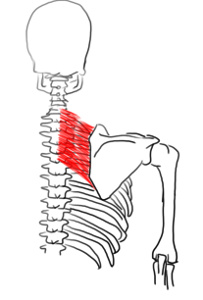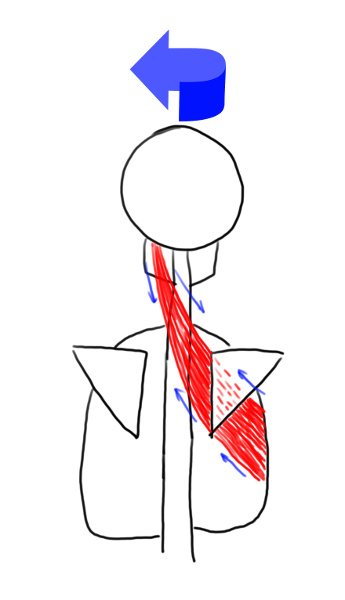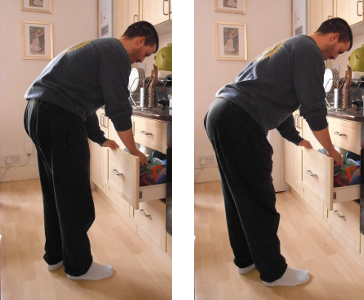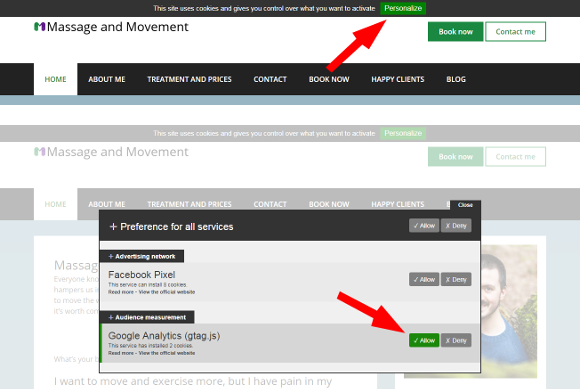Shoulder tensions or pain is what brings most people to my treatment room. While I’m happy to have clients, I would love for everybody to have relaxed, pain-free shoulders. Most of the time, these tensions or pain come from a less than optimal use of one’s shoulders. Here are two ways most people could use their shoulders better, to avoid tensions and pain.
Using the actual shoulder joint
You might have seen the picture below in my post about perfecting your posture, with a line along the line of “moving this way provides your shoulder joint with very beneficial movement”. This was a bit cryptic, so here is how that works, and how you can do it.
First: what’s wrong with the picture on the left? Well the shoulder does not participate in the movement, so that the neck and head have to bear way bigger load than in their optimal, vertical alignment. In addition to that, some folks additionally bring their shoulder up to meet the head, working those poor upper trapezius (or “traps” for short) when they really don’t need to.
How to correct that
Changing this bit of movement is not always easy, so here is an image to help with this task. The shoulder joint is a ball-in-socket joint. Or rather a ball-loosely-attached-to-a-vague-dip-in-a-wall-joint, and that gives it tremendous mobility! Now let’s picture this ball at the end of our humerus (arm bone), and think of initiating all the movement of our arm by spinning this ball in whatever direction (for instance, spinning back to lift our arm forwards).

This is a side-view of the scapula (shoulder blade, in light blue) and bumerus (arm bone, in dark blue). There is more happening when we lift our arm, but this image can already help.
In addition to that, we can focus on the sliding necessary for this spinning to happen, between this ball and its socket, which as previously mentioned in a very shallow dip in the lateral (far from the midline) aspect of the scapula (shoulder blade). Imagine this as an actual metal ball in a metal socket, filled with lubricant to allow for a smooth glide.
Relax those traps!
As mentioned earlier, we don’t want our upper traps to work when they don’t have to. To help with that, we can remember that unless we’re carrying a heavy load in our hands, they really don’t need to work! Here are two images to help reduce the load on your upper traps.
Carry your shoulders with your back
The muscles who should be carrying the shoulders instead of the traps are called rhomboids. They’re situated between the scapula and the spine on each side. See the picture below and this post for more detail.
You can then just picture your shoulders being carried, from the medial (close to the medial) side, by these muscles of the back. As always, don’t try to actively do this as you’ll only be adding layers of tensions; just picture it happening. You can replace the muscles by tiny people pulling, or ropes being pulled by some mechanical engine somewhere, if that helps you having a more passive image. This post details how you can expand this image to the behaviour of your arms.
Close the umbrella of your traps
This is an image that can seem silly, but that I’ve found to be very effective. Picture your clavicle and the spine of the scapula (highlighted in the picture below) as the rim of an umbrella; your spine is the rod at the middle of said umbrella.
And now, simply imagine that someone is closing this umbrella.
And with that, I hope you go on to have nicely relaxed and painless shoulders!
Continue reading: An Image For Relaxed Shoulders, Self-Treatment For Headaches, 5 Daily Opportunities To Perfect Your Posture.
Want more like this?
Check out the following blogs from massage therapists I know from around London:- On The Run Health and Fitness on running, nutrition and sports massage.
- The Soma Room on sports massage and exercise.






